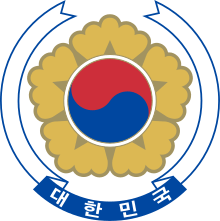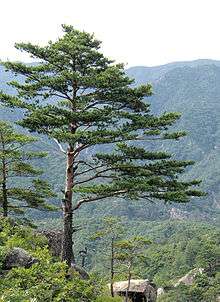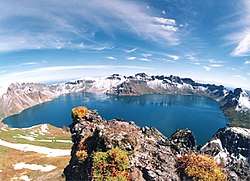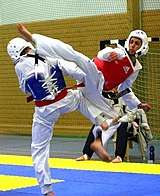National symbols of South Korea
The national symbols of South Korea are official and unofficial flags, icons or cultural expressions that are emblematic, representative or otherwise characteristic of South Korea (the Republic of Korea) and of its culture. Since the division in 1948, South Korea retained traditional symbols to distinguish from the national symbols of North Korea.
 |
| Part of a series on the |
| Culture of Korea |
|---|
| History |
|
Festivals |
|
|
Music and performing arts |
|
Media
|
|
|
Monuments
|
|
National symbols of Korea
|
Symbols
| Symbol | Image | Notes | |
|---|---|---|---|
| Flag | Flag of South Korea |  Taegukgi |
Current version, adopted in 2011. Inaugural version from 1948. |
| Emblem | Emblem of South Korea |  Emblem of South Korea (Taegeuk; Hibiscus syriacus) |
|
| National anthem | Aegukga 애국가 |
||
| Seal | National seal Guksae |
 |
Current version, adopted in 2011. Inaugural version was adopted in 1949. |
| Governmental emblem | Government Seal of South Korea (Taegeuk) |
 Government Seal of South Korea |
|
| National motto | 홍익인간 (弘益人間) | "Benefit broadly in the human world / Devotion to the Welfare of Humanity" |
|
| National tree | Korean red pine (Pinus densiflora) |
 Korean red pine |
|
| National flower | Hibiscus syriacus |  Hibiscus syriacus |
|
| National bird | Korean magpie (Pica sericea) |
.jpg) Korean magpie |
|
| National animal | Siberian tiger (Panthera tigris tigris) |
 Siberian tiger |
|
| National instrument | Gayageum | .jpg) Gayageum |
|
| National stone | Amethyst |  Amethyst |
|
| National mountain | Paektu Mountain, Hallasan |
 Paektu Mountain  Hallasan |
Paektu Mountain is located in North Korea and China. |
| National sport | Taekwondo |  Taekwondo |
gollark: C# sort of bad because OOP.
gollark: BAD BAD BAD
gollark: Observe the 1337 hackers at work.
gollark: It is possible to make it use memory for storage though.
gollark: Blame the establishment.
This article is issued from Wikipedia. The text is licensed under Creative Commons - Attribution - Sharealike. Additional terms may apply for the media files.